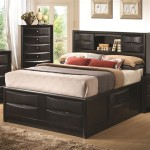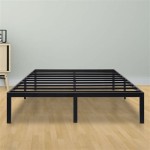Essential Aspects of Standard King and Queen Size Beds
Selecting the perfect bed size is crucial for a comfortable and restful night's sleep. Two of the most popular options are king and queen size beds, each offering distinct advantages. This article will delve into the essential aspects of standard king and queen size beds, providing valuable insights to help you make an informed decision.
Dimensions and Specifications
The primary difference between a king and queen size bed lies in their dimensions. A standard king size bed measures 76 inches (193 cm) wide and 80 inches (203 cm) long, making it ideal for couples who enjoy ample sleeping space. On the other hand, a standard queen size bed measures 60 inches (152 cm) wide and 80 inches (203 cm) long, providing a more compact yet comfortable sleeping arrangement for individuals or couples with limited space.
Mattress Options
Both king and queen size beds accommodate a wide range of mattress options, allowing you to customize your sleep experience. Common mattress types include memory foam, latex, hybrid, and innerspring. Memory foam conforms to your body, providing pressure relief and motion isolation. Latex offers a bouncy and responsive surface, promoting spinal alignment. Hybrid mattresses combine multiple materials for optimal support and comfort. Innerspring mattresses provide a traditional sleep experience with coils that provide firmness and breathability.
Bedding and Linens
When it comes to bedding and linens, king and queen size beds require specific sizes to ensure a proper fit. King size bedding typically consists of a flat sheet, fitted sheet, two pillowcases, and a comforter or duvet cover. Queen size bedding includes a flat sheet, fitted sheet, two pillowcases, and a comforter or duvet cover. It's important to note that pillow dimensions vary depending on personal preferences, with standard, queen, and king size pillows being the most common.
Room Space and Compatibility
Before selecting a king or queen size bed, it's essential to consider the available space in your bedroom. King size beds require ample room to move around comfortably, making them better suited for larger bedrooms. Queen size beds are a more versatile option, as they can fit in smaller spaces while still providing adequate sleeping space. Additionally, it's important to ensure that the bed frame and headboard are compatible with your mattress size for optimal support and aesthetics.
Comfort Considerations
The primary consideration when choosing between a king and queen size bed is comfort. King size beds offer the most spacious sleeping experience, allowing couples to stretch out and enjoy ample legroom. Queen size beds provide a comfortable sleeping arrangement for individuals and couples who prefer a more compact yet comfortable space. Ultimately, the best size for you depends on your personal sleeping preferences and physical needs.
Conclusion
Selecting the right bed size is essential for creating a comfortable and restful sleep environment. Both king and queen size beds offer distinct advantages, depending on your space availability, sleep habits, and personal preferences. By considering the dimensions, mattress options, bedding requirements, room compatibility, and comfort considerations discussed in this article, you can make an informed decision and choose the perfect bed size to enhance your sleep experience.

King Vs Queen Bed What S The Difference Amerisleep

King Vs Queen Bed Size Mattress What Is The Difference Nectar Sleep
.jpg?strip=all)
King Vs Queen Size Beds Differences Comparison And Benefits

King Vs Queen Bed Detailed Mattress Comparison Turmerry

The Ultimate Mattress Size Chart And Bed Dimensions Guide Sleep Advisor

King Vs Queen Size Mattress Dreamcloud

Mattress Sizes And Dimensions Guide Clarity

Decoding Mattress Sizes And Dimensions Ncoa Org

The Difference Between A Queen And King Bed Bedinabox

Bed Sizes Dimensions Guide Standardbedsizes Com Mattress Size Chart







